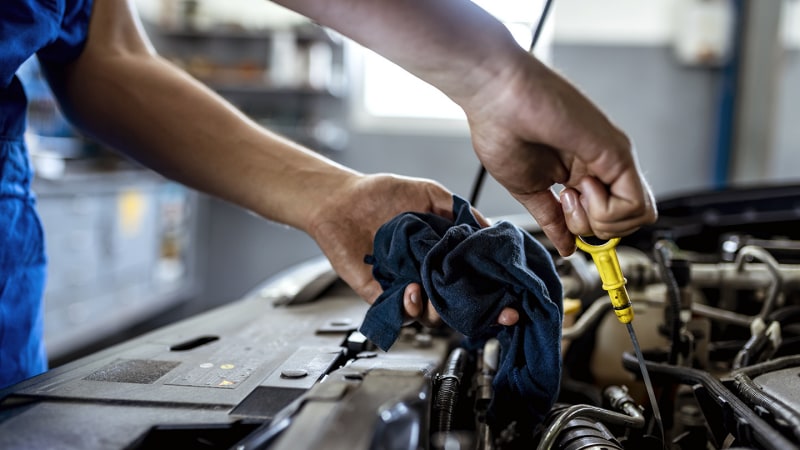How to check your oil

Quick insights
- To check the oil of your car, you probably don’t need extensive car expertise or special tools.
- Checking your oil to ensure it’s at the optimal level for your car can prevent serious issues.
- Before checking your oil, consult your car’s owner’s manual to understand where to look and what to do.
Checking your oil is important maintenance to perform whether you own or lease your car. Motor oil is used as a lubricant in various parts of a car’s engine and powertrain. Maintaining the correct level keeps the car running smoothly.
If you’ve never checked a car’s oil, don’t worry too much—this article can guide you through the process.
When to check your oil
You might want to check your car’s oil once a month and before any long trips. The exact frequency you check your car’s oil depends on a few things, including how much you drive. You may need to check the oil more frequently if your car has underlying issues or a mechanic recommends a certain timeline.
Regular oil checks are an important part of vehicle maintenance and can increase a car’s longevity. If you don’t check, you may not know when oil reaches an unsafe level. Environmental factors, driving habits and a car’s age can also affect how often your car needs its oil replaced.
How to check oil in a car
Your owner’s manual typically includes instructions on how to check the oil, which are important to follow. However, here’s a general guide:
- Park the car on level ground: This ensures the oil in the tank is level, too, which helps provide an accurate reading.
- Make sure the car engine is turned off and cool: Don’t try to check your car’s oil as soon as you stop driving. Hot engine components are hazardous to touch.
- Locate the dipstick: This is a rod that gauges the depth of the oil, and there might be a symbol, icon or label on the cap.
- Remove and clean off the dipstick: Pull out the rod completely, then use a rag or paper towel to remove all the oil.
- Put the dipstick back in: Ensure it goes all the way down the access tube.
- Remove and check the level: This is like taking a swab. The oil level should be between markers that say “min (change)” and “max.”
- Note the oil’s condition: It should be smooth and amber in color. Darker or grittier oil may need changing.
What is a safe oil level?
Oil dipsticks usually have a “min” and “max” marker—if your oil level falls between these when you check it, the level is probably safe. The labels might also have the words “full” and “add,” which give you a clearer idea of when your car needs more oil. Driving when your car doesn’t have a safe oil level can cause mechanical issues. That’s because so many critical car components are lubricated by motor oil.
An unsafe oil level could cause short- and long-term problems for your car. If the oil level is too low, you should typically change the oil or add a safe amount until you can complete a full change. If the oil is too high, you may need to drain the excess.
Additional maintenance tips for optimal vehicle performance
Regular oil changes with the right type of oil for your vehicle are an important part of car maintenance. Besides checking oil levels, here are some additional tips:
- Check tire pressure: Ensure it matches the PSI recommendation printed on the wall of the tire.
- Replace air filters: Manufacturer suggestions vary, but air filters usually last at least 10,000 miles.
- Monitor fluids: You don’t want to be out of wiper fluid when you need it most. Clean oil, whether synthetic or conventional, also contributes to the engine’s efficiency.
- Receive annual inspections: These can increase the longevity of your car and identify potential issues before they become too costly.
In summary
Before checking your car’s oil, consult the owner’s manual, which usually has a set of instructions. This may also help you understand what you see when you look at the engine. After that, be sure the car is turned off and parked on level ground. Then, you can pop the hood, clean the dipstick and check the level. To know how often you should check or change your oil, consult your owner’s manual or a trusted mechanic.



